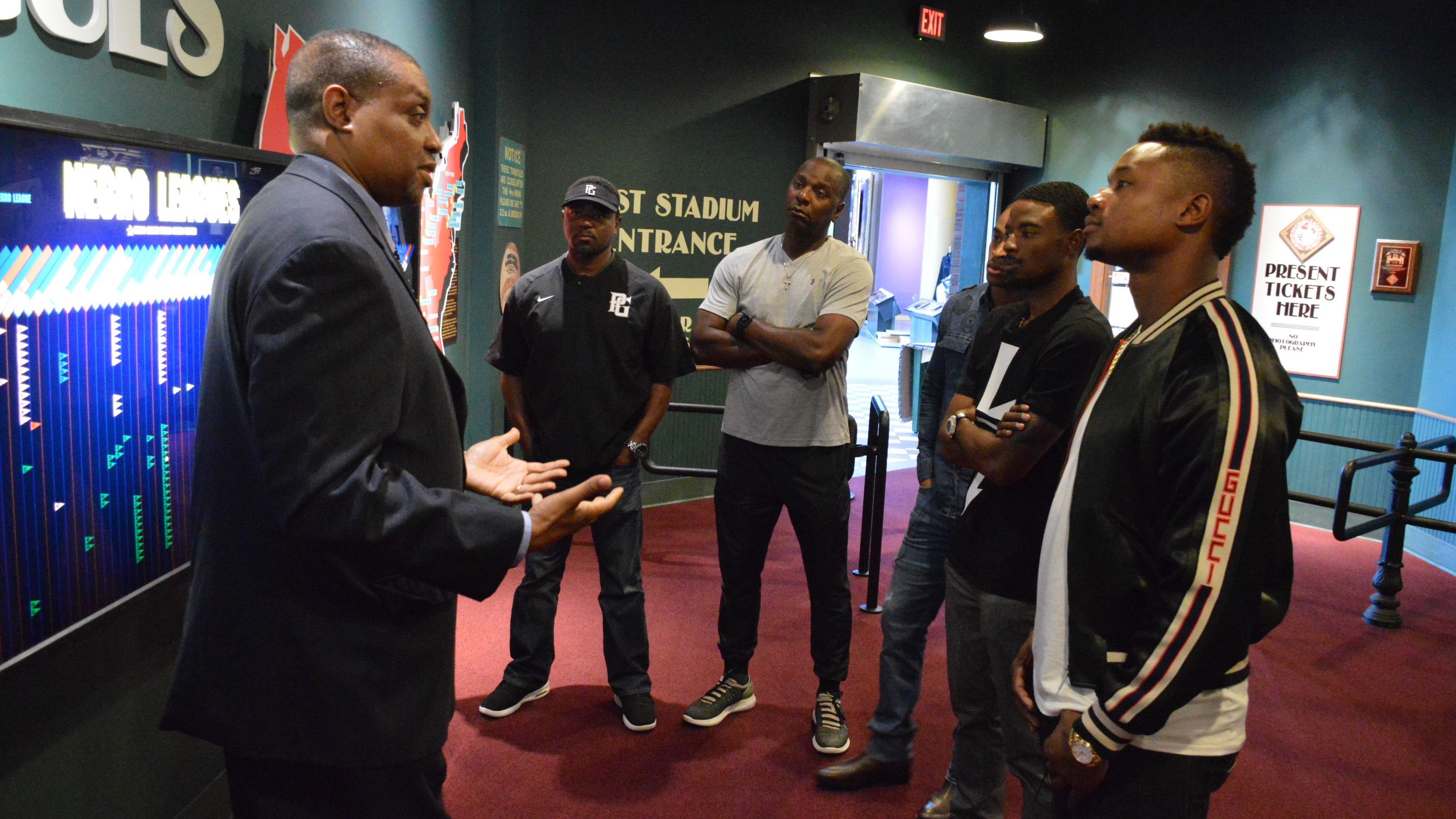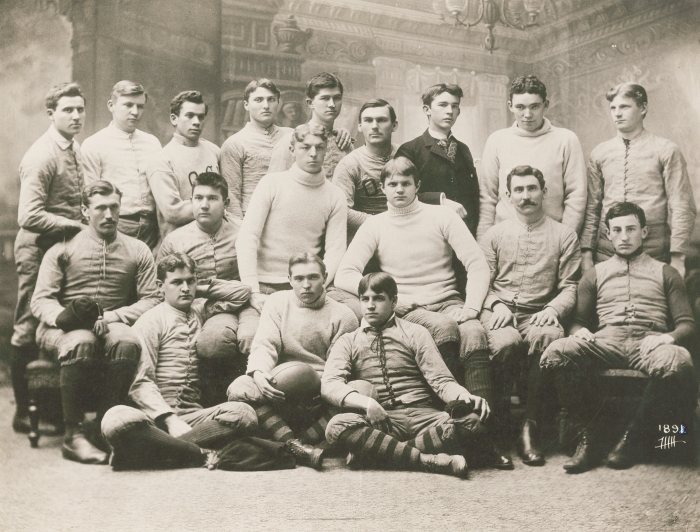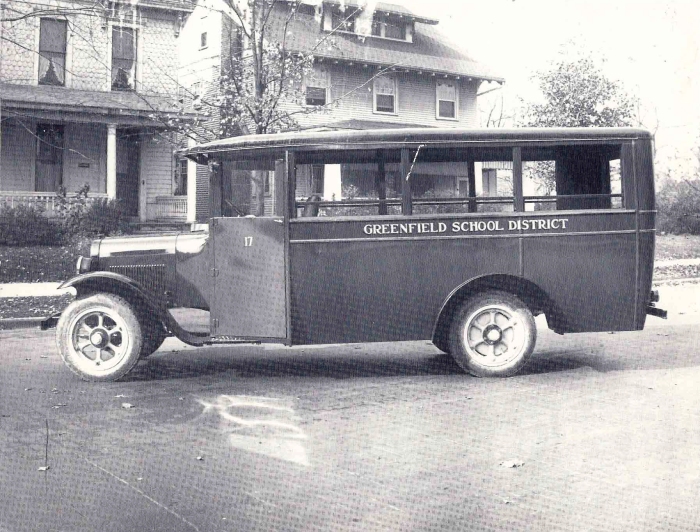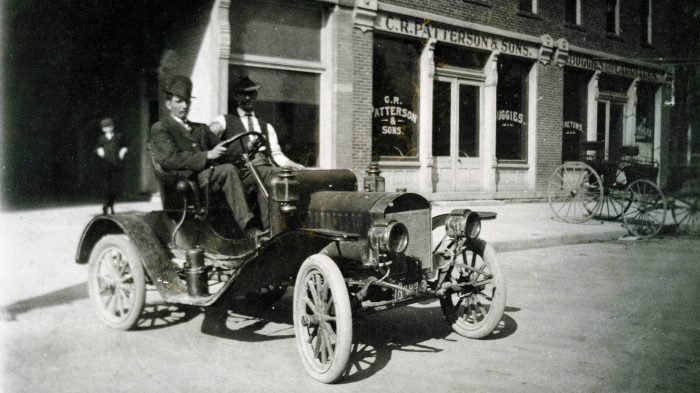Twenty-five years after the 13th Amendment abolished slavery in the United States, Frederick Douglass Patterson took the field in the fall of 1890 as Ohio State University’s first Black football player.
And in the last game of that first season, Patterson became the answer to another trivia question when he scored a touchdown. He replaced the starting quarterback in a game the following season.
These moments on the college football field were a mere glimpse into the extraordinary Patterson family legacy.
Patterson was born to a free Black family in Greenfield, a small dot on an Ohio map, about 55 miles south of Columbus. The son of an entrepreneur, he transformed the family buggy transportation business into an automobile factory in 1915 — the first Black-owned automotive company in the country.
Decades later, the Patterson legacy remains a highlight of Greenfield.
Christopher Nelson, author of the book The C.R. Patterson and Sons Company: Black Pioneers in the Vehicle Building Industry, 1865-1939, said residents remain proud of the story.
“Greenfield holds a town festival every year, and it revolves around transportation,” said Nelson, who grew up in nearby Sabina, and eventually moved to Greenfield. “Of course, the Pattersons are a big part of that celebration.”
Tom Smith owns a Greenfield car dealership established by his father in 1947. Smith’s interest in the Pattersons grew so much when he was young that he collected artifacts through the years.
“I grew up about a half-block from where they started making buggies,” said Smith, who owns eight horse buggies made by the Patterson company. “It was a big deal to me that cars were made in my hometown. I started doing research and began to collect memorabilia.”
The Patterson story begins when Patterson’s grandparents — “free Negroes” from Virginia — migrated to Greenfield, a hub for abolitionists. According to Nelson’s book, Patterson’s grandparents had four children, including his father Charles Richard (C.R.). In 1871, Patterson was born to C.R. and Josephine. Two years after Patterson’s birth, his father and a white partner opened a carriage business called C.R. Patterson and Sons. Twenty years later, the white partner sold his shares to C.R. Patterson.
Frederick Patterson was born to a free Black family who had moved to Ohio during slavery.
Richard Patterson
Richard Patterson, 80, is especially proud of his great-grandfather C.R, one of the many inspirations in the family.
“I hope [his life]lets people know they can achieve and do different things,” Richard Patterson said. “C.R. had an idea, and he wanted to own his own business. He was a Black man with limited education, but he was able to own the largest Black business in the United States for about 10 years.”
 Raymond Doswell is bringing a baseball background to ‘Black Wall Street’Read now
Raymond Doswell is bringing a baseball background to ‘Black Wall Street’Read now
Patterson got a taste of the family’s self-determination after completing eighth grade. He was refused admission to the all-white Greenfield High School, and C.R. Patterson sued the school board in 1886 to admit his son. The Pattersons won their case. Not only was Patterson the first Black student to attend the high school, he also graduated as class valedictorian.
When the Ohio State football program began in 1890, the Buckeyes had a spring team and a fall team. The spring team played only one game and didn’t have a coach. The fall team had a coach, but finished 0-4 and was shut out three times. Patterson enrolled at Ohio State in 1889 and joined the football team the following year.
That season, Patterson made his presence known on Thanksgiving in Columbus against Kenyon College. It was the first game on record with Patterson as a starter. He played defensive and offensive end. On a cold day and a slushy field, according to archives of Ohio State’s student newspaper The Lantern, Patterson scored on a fumble return. It was Ohio State’s first defensive touchdown and first touchdown scored by a Black player.
The following season, Patterson’s last, also included a first. Ohio State, winless that fall, fell behind 32-0 in the first half against Adelbert College, now known as Case Western Reserve University. Ohio State’s quarterback, out of frustration, was kicked out for throwing a punch at an Adelbert player. He was replaced by Patterson. Adelbert smashed Ohio State 50-6, and Patterson was praised in The Lantern for leading the Buckeyes to their only score.
 Frederick Patterson (top row, third from left) stands for a group portrait with the 1891 Ohio State football team. Patterson was the first Black football player at Ohio State.
Frederick Patterson (top row, third from left) stands for a group portrait with the 1891 Ohio State football team. Patterson was the first Black football player at Ohio State.
The Ohio State University Archives
The 1890 team photo doesn’t have Patterson because it was taken in the spring, before he joined the team. He’s there in the 1891 team photo. Despite his very light complexion, newspaper articles didn’t shy away from his Blackness.
“He was described in many articles as the school’s ‘colored student,’ ” Nelson said.
Besides football, Patterson played baseball in 1892. William Clark was the first Black baseball player at Ohio State two years before. Patterson was also a member of the Horton Literary Society, served as assistant business manager of The Lantern, and was the 1893 class president.
Patterson left college his junior year for a teaching job in Kentucky and never returned. He got married and had two sons, Frederick Postell and Postell. Each would also attend Ohio State. In 1926, Postell was one of 12 charter members of the university’s Iota Psi chapter of the Omega Psi Phi fraternity.
Patterson returned to Greenfield after four years in Kentucky because his brother Samuel was sick. Patterson also joined the family business. Away from the company, Patterson participated in community organizations. Nationally, Patterson was a member of the National Negro Business League, an organization created by educator and orator Booker T. Washington to promote the financial development of Black businesses. Over the years, Patterson served as a vice president and then president of the local chapter.
Patterson helped transform the family business from a “buggy business” into auto repair. Apparently, that type of business wasn’t enough when Patterson introduced the Patterson-Greenfield automobile in 1915. Each car cost $685. The company employed Black and white workers who worked side by side, a rarity during that era.
About 30 to 150 of Patterson’s cars were built between 1915 and 1917, according to Nelson’s book. Nevertheless, Patterson couldn’t mass produce their cars like Henry Ford and General Motors, nor could he compete with Ford and General Motors’ prices, which cost nearly half the price of his cars.
 Frederick Patterson’s family-owned company built a variety of vehicles, including school buses for the Greenfield School District.
Frederick Patterson’s family-owned company built a variety of vehicles, including school buses for the Greenfield School District.
Historical Society of Greenfield, Ohio
“If Frederick had built his car five to 10 years earlier,” Nelson wrote, “he might have had a better chance at success, but he entered the field too late to compete and was forced to stop production of the Patterson-Greenfield automobile.”
Patterson was able to maintain the business by repairing cars and building school buses and trucks. School districts from Greenfield to Columbus, Cincinnati and Cleveland bought Patterson buses.
The company remained successful until Patterson’s death in 1932. His sons took over, but shortly after his death — and partly due to the Great Depression — the company failed. But the legacy lives on.
 MLB’s ‘Undeniable’ animated shorts give life to Negro Leagues baseballRead now
MLB’s ‘Undeniable’ animated shorts give life to Negro Leagues baseballRead now
In 2021, C.R. and Frederick Patterson were inducted into the Automotive Hall of Fame, an easy choice for the hall.
“We were very inspired by Frederick Patterson’s ingenuity, tenacity, and innovative achievements in the face of continued adversity,” said Sarah Cook, president of the Automotive Hall of Fame. “Despite the challenges he faced in school, on the football field, or up against the titans of the automotive industry, he never backed down. That fighting spirit is something to celebrate.”
On June 3, Greenfield will rename a street in the Pattersons’ honor. Richard Patterson hopes the journey carved out by his ancestors is never forgotten.
“This is a part of history that hasn’t been told,” he said. “Hopefully, these articles and a future documentary will make people aware that there was a Black family that maintained decency while they fought through a level of racism.”
Branson Wright is a filmmaker and freelance multimedia sports reporter.



